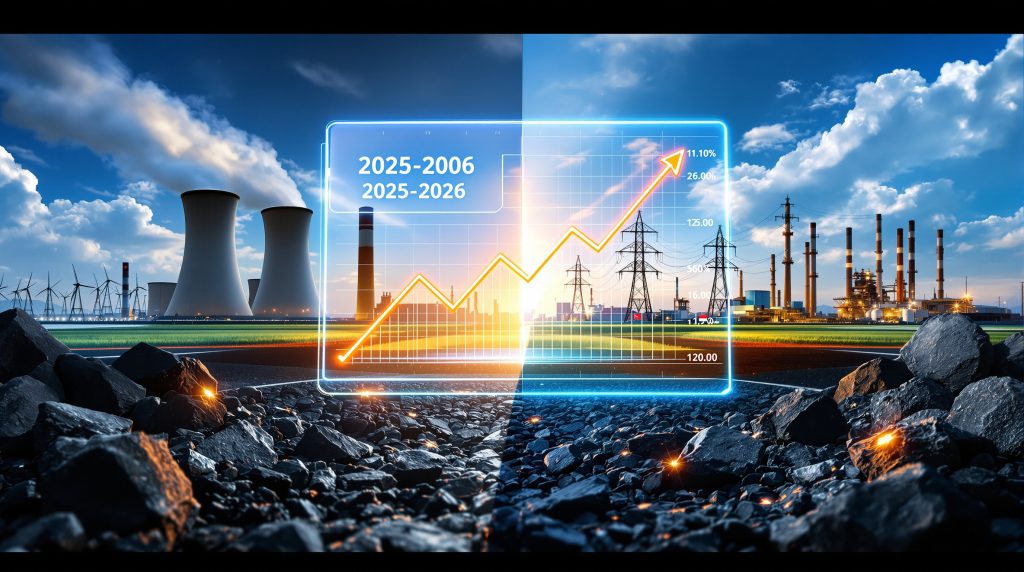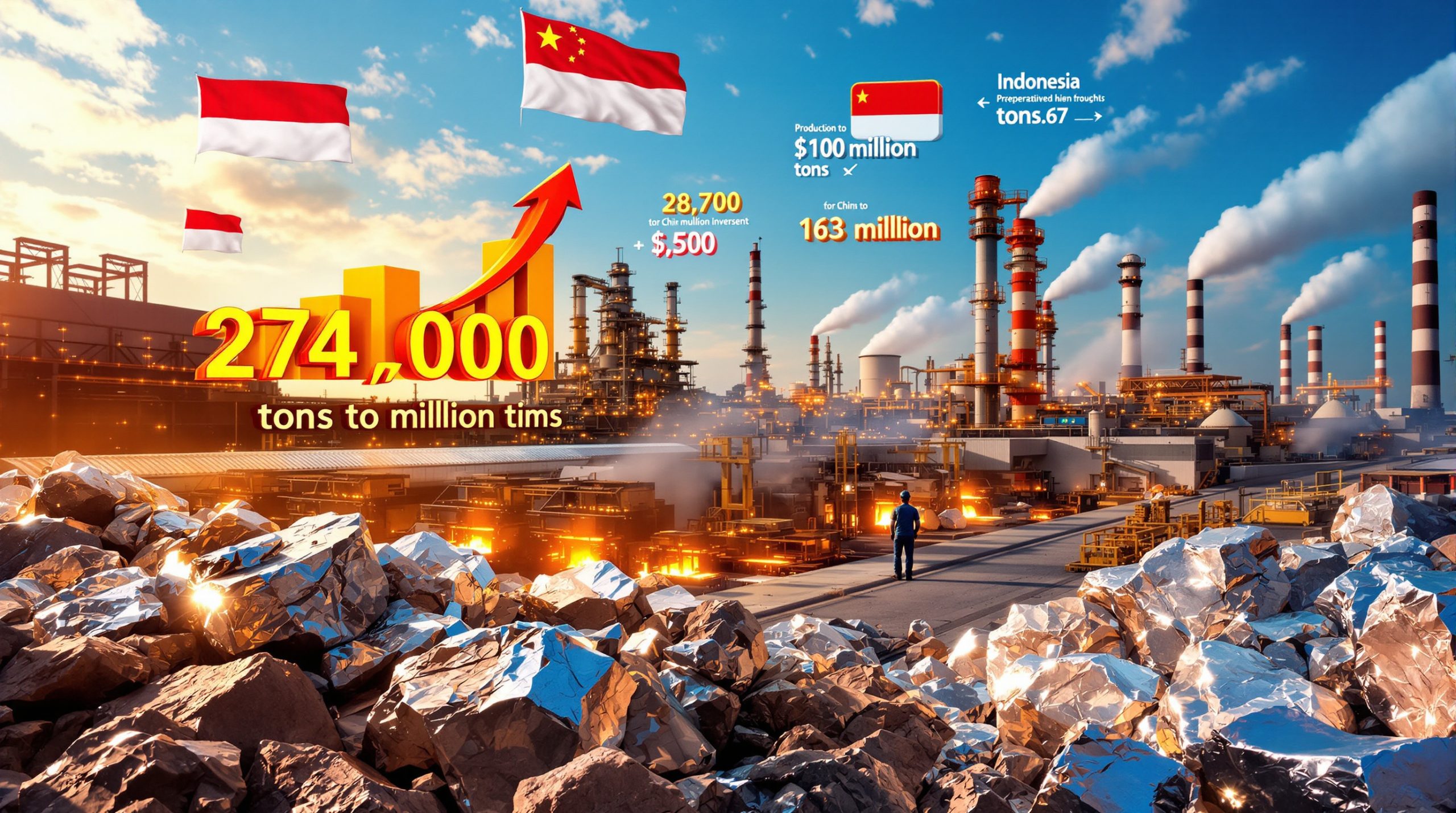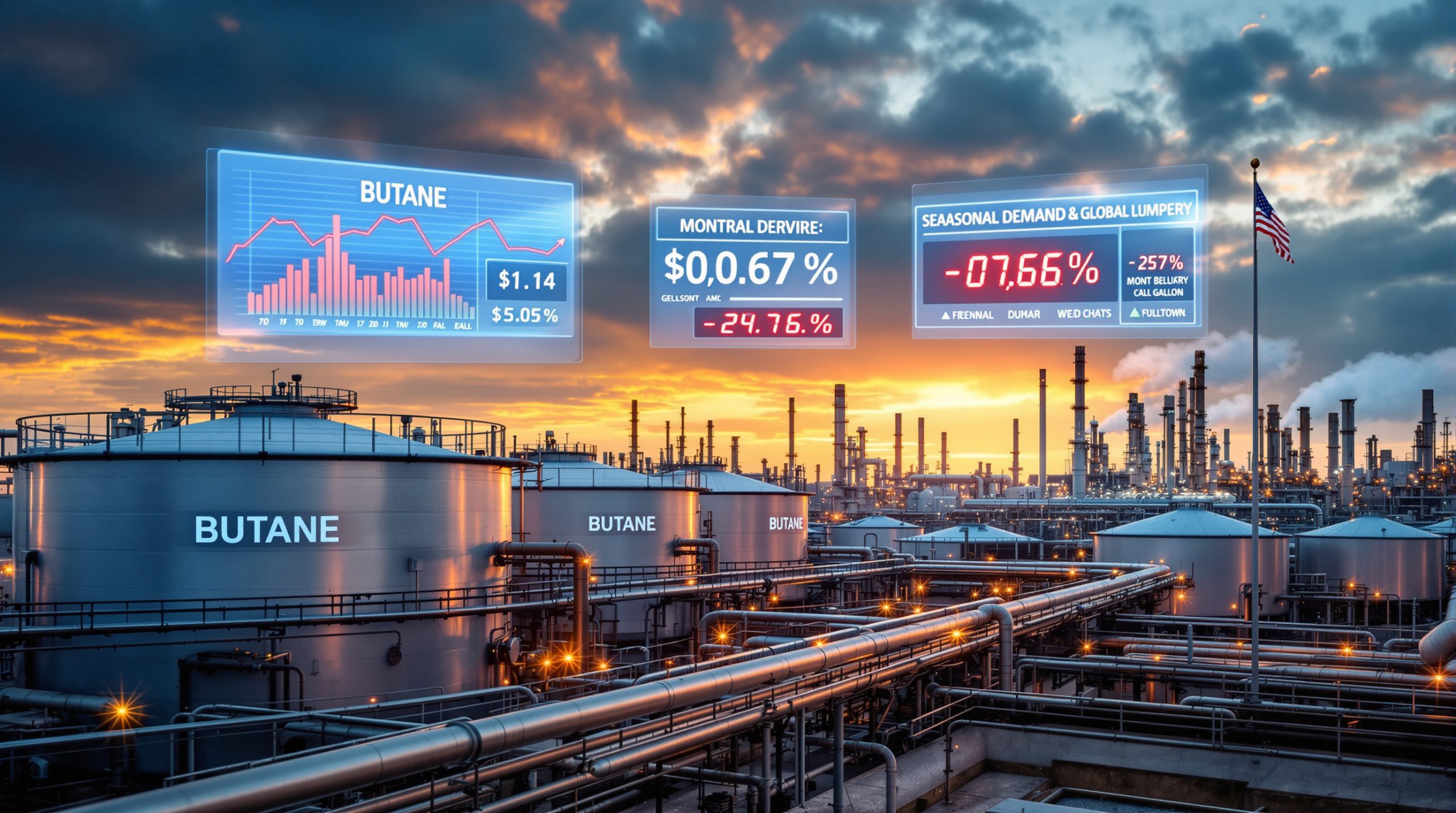What Factors Are Driving Current Coal Price Movements?
The global coal market is experiencing significant volatility due to a complex interplay of supply and demand dynamics. Several key factors are influencing current price movements in both thermal and metallurgical coal markets worldwide.
Global Economic Growth Patterns
China's economic slowdown has dramatically impacted global coal demand, with energy consumption growth rates dropping by approximately 80% in 2024 compared to previous years. This reduced appetite from the world's largest coal consumer has created ripple effects throughout global markets.
India, another major coal consumer, has seen its demand growth moderate by about one-third compared to historical trends. While still positive, this slowdown in growth from two of the world's most populous nations has significantly affected global coal price forecast equilibrium.
Meanwhile, developed economies across Europe and North America continue their structural shift away from coal consumption. This transition, while occurring at a slower pace than anticipated earlier in the decade, represents a long-term headwind for global coal demand.
Energy Transition Dynamics
The accelerating deployment of renewable energy capacity is increasingly displacing coal in electricity generation across multiple regions. According to the International Energy Agency, renewable energy accounted for over 90% of new electricity generation capacity additions globally in 2024, continuing to erode coal's market share.
In Asia, high-efficiency, low-emission (HELE) coal plants are becoming more selective, favoring premium thermal coal with higher energy content and lower ash content. This quality differentiation is creating a two-tiered market where premium thermal coal commands significant price premiums over lower-quality alternatives.
Steel production technologies continue to evolve, with electric arc furnaces and hydrogen-based direct reduction processes gaining traction. However, traditional blast furnace methods requiring metallurgical coal still dominate global coal reserves production, providing ongoing support for metallurgical coal demand.
Supply-Side Adjustments
As coal prices have declined from their 2022-2023 peaks, higher-cost producers are reducing output or ceasing production entirely. Market data indicates that approximately 45 million tonnes of annual production capacity has been idled or permanently closed since mid-2023.
Financial distress is becoming increasingly common among coal producers positioned in the upper quartiles of the cost curve, with several smaller mining companies filing for bankruptcy protection or undergoing financial restructuring.
Major coal producers with stronger balance sheets are cautiously managing production volumes to avoid further market oversupply, implementing selective mine closures or reducing operating days at higher-cost operations.
How Are Coal Prices Expected to Trend in 2025-2026?
Market projections indicate a continued downward trajectory for coal price forecast through the 2025-2026 period, though with important distinctions between coal types and quality tiers.
Thermal Coal Price Outlook
Average thermal coal prices are projected to decline approximately 27% year-over-year in 2025 to around $100 per metric ton, reflecting persistent oversupply and reduced demand growth. This represents a significant correction from the price levels seen during the 2022-2023 energy crisis.
Further price erosion of 5-12% is anticipated in 2026 as renewable energy capacity additions continue to pressure coal-fired generation. The lower end of this range would represent thermal coal prices approaching the marginal cost of production for many suppliers.
Current futures curves suggest an average price of $115 per metric ton for the 2025-2027 period, indicating the market expects some stabilization after the initial correction. This futures pricing represents a significant premium to analyst consensus estimates, suggesting potential downside risk to current market expectations.
Metallurgical Coal Price Outlook
Metallurgical coal prices are expected to demonstrate greater resilience, with average prices stabilizing around $210 per metric ton for the 2025-2027 period. This relative strength compared to thermal coal reflects the more limited substitution options in steelmaking and ongoing infrastructure development across emerging markets.
Premium hard coking coal will likely maintain its price advantage over lower-quality varieties, with the quality premium potentially expanding as steelmakers focus on efficiency and emissions reduction. High-grade metallurgical coal with strong coke strength after reaction (CSR) values may command premiums of 25-35% over mid-tier alternatives.
Semi-soft coking coal prices are expected to track closer to premium hard coking coal during periods of coal supply challenges, but revert toward thermal coal pricing during oversupplied markets. This price correlation pattern has become more pronounced in recent years, creating additional volatility for producers of this coal type.
Long-Term Price Projections
Midcycle price expectations from 2029 onward point to thermal coal stabilizing around $107 per metric ton and metallurgical coal at approximately $160 per metric ton, according to consensus analyst forecasts. These projections align with estimated long-run marginal production costs adjusted for inflation.
Industry cost curve analysis indicates that these price levels would allow profitable operation for approximately 70% of global thermal coal production and 75% of metallurgical coal output. Higher-cost producers would likely face continued financial pressure at these price levels.
Market fundamentals suggest limited upside potential beyond these midcycle estimates, as structural headwinds from energy transition and capital allocation constraints limit supply-side responses to temporary price spikes.
What Regional Variations Exist in Coal Market Dynamics?
The coal market exhibits significant regional differences in both supply and demand patterns, creating localized market conditions that can diverge from global trends.
Asia-Pacific Demand Trends
China's coal consumption growth has slowed dramatically to less than 1% annually but remains positive, supported by continued industrialization in inland provinces. Government policies aimed at energy security continue to support domestic coal production and consumption despite climate commitments.
India continues to expand coal-fired generation capacity, though at a reduced pace compared to earlier projections. The country added approximately 8 GW of new coal-fired capacity in 2024, down from historical additions of 12-15 GW annually. Domestic coal production has increased significantly, reducing import dependencies for thermal coal.
Southeast Asian nations like Vietnam, Indonesia, and the Philippines maintain coal as a central component in their energy mix despite ambitious renewable energy targets. Young coal-fired power plants with decades of remaining operational life support continued demand for premium thermal coal across the region.
The preference for high-efficiency coal plants in Asia has created sustained demand for coal with higher calorific values (>6,000 kcal/kg) and lower impurities, which command price premiums of 30-40% over lower-grade alternatives.
North American Market Conditions
The United States coal market presents a contrarian case, with coal consumption expected to increase by approximately 7% in 2025 according to the Energy Information Administration. This temporary uptick reflects higher natural gas prices and increased electricity demand from data centers and AI-related infrastructure.
This regional growth contrasts sharply with the global downward trend and illustrates how local market conditions can create short-term demand anomalies. However, long-term structural declines in U.S. coal consumption remain intact, with additional coal plant retirements scheduled throughout 2026-2028.
The U.S. export market for both thermal and metallurgical coal has become increasingly important for domestic producers, with approximately 35% of U.S. coal production now destined for international markets compared to just 12% a decade ago.
Supply Landscape Changes
Indonesia and Australia remain the dominant thermal coal exporters, accounting for nearly 60% of seaborne thermal coal trade. Indonesia's lower-quality coal faces increasing price pressure, while Australia's higher-energy coal maintains stronger market positioning.
Canada continues to provide high-quality metallurgical coal for steelmaking, with its premium hard coking coal varieties commanding significant price premiums in Asian markets. Production discipline from Canadian producers has helped stabilize metallurgical coal prices during periods of market weakness.
Russian export patterns have shifted dramatically due to geopolitical constraints, with volumes redirecting from European markets toward India, China, and other Asian buyers. This realignment has created localized pricing discounts for Russian coal but has not fundamentally altered global supply-demand balances.
U.S. and some other producers are potentially reducing output in alignment with energy transition goals and financial constraints. Several major U.S. coal producers have announced production cutbacks totaling approximately 15 million tons annually through 2025-2026.
What Are the Key Risk Factors for Coal Price Forecasts?
Several variables could significantly impact coal price trajectories, creating both upside and downside risks to the base case projections outlined above.
Upside Price Risks
Stronger-than-anticipated economic growth in China and India would significantly impact global coal demand and potentially drive prices higher. A 1 percentage point increase in GDP growth across these economies could translate to approximately 50 million additional tons of coal demand annually.
Delays or underperformance in renewable energy capacity additions could slow coal displacement in electricity generation. Recent challenges in renewable supply chains and grid integration have already extended the operational timeline for some coal-fired generation assets.
Extreme weather events, which are increasing in frequency and severity due to climate change, can drive short-term energy demand spikes that often favor dispatchable generation sources including coal. The 2021-2022 energy crisis demonstrated how quickly coal prices can surge during supply constraints.
Supply disruptions from major producing regions due to weather, labor actions, or regulatory changes could create temporary price spikes. Australia's periodic cyclone season has historically impacted metallurgical coal exports, creating price volatility in this market segment.
Downside Price Risks
Accelerated renewable energy adoption and storage solutions could displace coal-fired generation faster than currently projected. Battery storage costs have declined by approximately 85% over the past decade, enabling greater integration of intermittent renewable sources.
Weaker-than-expected economic performance in key Asian economies would significantly reduce coal demand projections. China's property sector challenges and India's uneven industrial growth represent significant downside risks to coal consumption forecasts.
Oversupply could emerge if major exporters increase production volumes in response to temporary price improvements. Production discipline has been inconsistent historically, with producers often expanding output during favorable price conditions.
Relaxation of geopolitical constraints on Russian coal exports could increase available supply to traditional European markets, potentially pressuring prices in the Atlantic Basin and creating knock-on effects in other regions.
Carbon pricing mechanisms affecting coal competitiveness are expanding globally, with approximately 45% of global emissions now covered by some form of carbon pricing. Higher carbon prices would accelerate coal-to-gas switching and renewable adoption in price-sensitive markets.
Technological Developments
Green steel technologies using hydrogen or electrolysis are advancing, though full commercial scale implementation remains decades away for most applications. Demonstration projects have shown promising results but face significant scaling challenges and capital requirements.
Efficiency improvements in coal utilization, including supercritical and ultra-supercritical technologies, are reducing the coal required per unit of electricity generated. Modern plants can achieve 25-30% greater efficiency than older coal-fired generation units.
Energy storage advancements are enabling greater renewable penetration by addressing intermittency challenges. Utility-scale battery deployments exceeded 30 GW globally in 2024, approximately triple the capacity installed in 2021.
How Are Coal Producers Adapting to Market Conditions?
Industry participants are implementing various strategies to navigate challenging market conditions and position their businesses for an uncertain future.
Operational Adjustments
Cost reduction and operational efficiency have become primary focus areas, with producers implementing advanced analytics, automation, and process optimization to lower per-ton production costs. Leading producers have achieved cost reductions of 15-20% since 2020 through these initiatives.
Production curtailment at higher-cost mines has become increasingly common, with companies temporarily or permanently closing operations that cannot generate positive cash flow at current price levels. This supply rationalization helps stabilize market conditions but often comes with significant social and economic impacts in mining communities.
Quality optimization has become a strategic priority, with producers allocating capital and operational resources to maximize production of premium coal products with higher margins. Selective mining techniques, beneficiation investments, and blending strategies are being employed to enhance product quality and price realization.
Portfolio Management
Diversification across coal types has emerged as a risk management strategy, with some producers maintaining a balanced portfolio of thermal and metallurgical coal assets. This approach provides natural hedging against divergent price movements between these coal categories.
Strategic acquisitions of high-quality assets have occurred during market downturns, allowing well-capitalized producers to enhance their resource base and operational footprint at attractive valuations. These transactions often target operations in the lowest quartile of the cost curve or those producing premium coal qualities.
Divestment of higher-cost operations has accelerated, with major producers shedding non-core assets to focus their portfolios on longer-life, lower-cost operations. These transactions have created opportunities for specialized operators with lower overhead structures to acquire these assets at discounted valuations.
Financial Strategies
Debt reduction during price upswings has become standard practice among prudent operators, with many producers using cash flow from favorable market conditions to strengthen their balance sheets. Leading producers have reduced net debt-to-EBITDA ratios from peaks of 3-4x to current levels below 1x.
Capital allocation discipline has increased markedly, with higher hurdle rates applied to expansion projects and more conservative price assumptions used in feasibility studies. Major producers have reduced capital expenditures by 30-40% compared to previous investment cycles.
Shareholder returns through dividends and share buybacks have become more prevalent during favorable price periods, reflecting the sector's shift toward capital discipline and recognition of limited organic growth opportunities. Dividend payout ratios exceeding 50% of free cash flow have become common among established producers.
What Investment Considerations Apply to Coal Producers?
Investors evaluating coal producers should consider several key factors that differentiate companies within this challenging sector.
Quality Differentiation
Producers of high-energy, low-ash thermal coal may face less demand erosion as power generators prioritize efficiency and emissions reduction. Coal with calorific values exceeding 6,000 kcal/kg often commands price premiums of 30-40% over lower-quality alternatives and faces less direct competition from natural gas and renewables.
Premium metallurgical coal producers benefit from limited substitution options in traditional steel production. Coal with strong coking properties, particularly high CSR values and low impurity levels, maintains pricing power even during market downturns as steelmakers prioritize operational stability and product quality.
Lower-quality coal faces greater displacement risk from renewables, natural gas, and environmental regulations. Producers of sub-bituminous coal and lignite with high moisture content and lower energy values are particularly vulnerable to structural demand declines and pricing pressure.
Cost Position
Low-cost producers can maintain profitability during price downturns, creating a significant competitive advantage in a cyclical industry. Operations in the first quartile of the global cost curve typically remain cash positive even during severe market downturns.
Position on the global cost curve determines operational resilience and ability to weather extended periods of weak pricing. Approximately 25% of global thermal coal production and 20% of metallurgical coal production operates with cash costs exceeding current market prices, creating financial stress for these producers.
Capital intensity affects long-term returns on invested capital, with lower-capital-intensity operations typically delivering superior returns through market cycles. Open-pit operations with favorable stripping ratios generally require less capital per ton of production capacity than underground mines or those with complex geology.
Balance Sheet Strength
Debt levels and maturity profiles impact financial flexibility and ability to withstand extended market downturns. Companies with net debt-to-EBITDA ratios below 1.5x and well-laddered debt maturities can typically navigate through cyclical downturns without financial distress.
Cash reserves provide a buffer against price volatility and operational disruptions. Leading producers have established minimum liquidity targets representing 6-12 months of fixed costs plus debt service requirements.
The ability to return to net cash position after acquisitions or investments represents an important financial resilience indicator. Companies that can quickly deleverage following strategic investments demonstrate superior capital allocation discipline and operational cash generation capabilities.
How Does the Energy Transition Impact Coal Market Outlook?
The global shift toward lower-carbon energy sources affects coal markets in several ways, creating both challenges and opportunities for industry participants.
Differentiated Impact by Coal Quality
High-energy, low-ash thermal coal is likely to see more gradual demand decline as efficiency and emissions considerations favor higher-quality products. Power plants designed for premium thermal coal cannot easily switch to lower-quality alternatives without significant operational compromises and emissions increases.
Lower-quality thermal coal faces accelerated displacement as aging power plants retire and environmental regulations tighten. Coal with higher sulfur, ash, and moisture content typically generates more emissions per unit of energy produced, making it more vulnerable to environmental policies.
Metallurgical coal demand demonstrates greater resilience due to limited alternatives in steelmaking, though quality differentiation remains important. Premium hard coking coal with superior strength characteristics will likely maintain its market position longer than thermal coal or lower-quality metallurgical coal varieties.
Geographic Variations in Transition Speed
Developed economies are moving faster to reduce coal consumption, with Western Europe, North America, and parts of East Asia implementing accelerated phase-out timelines. These regions have established regulatory frameworks, carbon pricing mechanisms, and financial resources to support energy transition initiatives.
Emerging markets balance energy security, affordability, and environmental goals, often resulting in more gradual transition timelines. Countries like Indonesia, Vietnam, and India continue to add coal capacity despite renewable energy growth, reflecting the ongoing role of coal in their energy security strategies.
Young coal plant fleets in Asia support continued demand for premium coal, with many facilities having expected operational lifespans extending beyond 2040. Approximately 290 GW of coal-fired capacity in Asia has been constructed since 2015, representing significant sunk capital that operators will seek to utilize through its economic life.
Investment in Existing Assets vs. New Development
Limited capital is available for new coal projects, with major financial institutions implementing lending restrictions and institutional investors reducing exposure to thermal coal in particular. According to the Institute for Energy Economics and Financial Analysis, over 180 globally significant financial institutions have implemented formal coal financing restrictions.
The focus has shifted toward extending the life and improving efficiency of existing operations rather than developing greenfield projects. Capital expenditures increasingly target maintenance, incremental expansion, and efficiency improvements rather than new mine development.
Higher hurdle rates for new project approvals reflect increased regulatory, market, and social license risks. Internal rates of return exceeding 20% are often required for new thermal coal projects compared to historical hurdle rates of 12-15%, reflecting the higher risk premium demanded by investors.
FAQ: Common Questions About Coal Price Forecasts
Will Coal Prices Recover in the Near Term?
Current market indicators suggest limited potential for significant price recovery in 2025-2026. Supply adjustments through production curtailments and mine closures will likely be needed to stabilize prices at levels that support sustainable operations for mid-tier producers.
Historical patterns indicate that coal price recovery typically requires 12-18 months of supply rationalization following significant price declines. Based on this precedent, meaningful price improvement may not emerge until late 2026 unless demand increases unexpectedly or major supply disruptions occur.
Market data indicates that approximately 45 million tonnes of annual production capacity has been idled or permanently closed since mid-2023, representing about 5% of seaborne trade volumes. Additional supply adjustments may be necessary to rebalance the market and support price recovery.
How Do Exchange Rates Impact Coal Producers?
Currency fluctuations can significantly affect the competitive position of coal exporters, with a weaker domestic currency typically benefiting exporters by reducing costs in USD terms. Australian producers, for instance, gain approximately $1-2 per ton in margin for every $0.01 decline in the AUD/USD exchange rate.
Major coal-producing countries have experienced divergent currency movements, with the Australian dollar weakening approximately 8% against the USD since 2022, enhancing the competitive position of Australian exporters. Conversely, the Russian ruble's managed exchange rate has limited the cost benefits for Russian producers.
Exchange rate volatility can complicate investment decisions and financial planning for producers operating across multiple currency jurisdictions. This volatility has contributed to the industry's more conservative approach to capital allocation and project development in recent years.
What Role Does China Play in Global Coal Markets?
China remains the largest coal consumer globally, accounting for approximately 55% of world coal consumption. Its economic growth rates, domestic production policies, and import restrictions have outsized impacts on global coal price formation.
Chinese government policies, including safety inspections, production quotas, and import restrictions, can create significant short-term price volatility. Administrative interventions in domestic coal markets have become more frequent in recent years, creating additional uncertainty for market participants.
The interplay between Chinese domestic production and import demand represents a critical balancing mechanism for global coal markets. When domestic prices exceed import parity levels, Chinese buyers increase seaborne purchases, supporting international prices; conversely, self-sufficiency policies can significantly reduce import demand.
How Do Environmental Regulations Affect Coal Demand?
Environmental policies increasingly influence coal consumption patterns, with higher-quality coal facing less immediate pressure due to its efficiency advantages in modern power plants. Regulations targeting sulfur dioxide, nitrogen oxides, and particulate matter emissions favor higher-quality coal with lower impurity levels.
Carbon pricing mechanisms have expanded globally, with approximately 45% of global emissions now covered by some form of carbon pricing instrument. These mechanisms accelerate coal-to-gas switching and renewable adoption in price-sensitive markets.
Regional and local air quality regulations have sometimes had more immediate impacts on coal consumption than climate policies. China's "Blue Sky" initiatives and India's emissions standards for power plants have significantly influenced coal quality requirements and consumption patterns in these key markets.
What Is the Long-Term Outlook for Metallurgical Coal?
Metallurgical coal demand is expected to be more resilient than thermal coal, as economically viable alternatives for blast furnace steelmaking remain limited at commercial scale. Traditional integrated steelmaking still accounts for approximately 70% of global steel production.
Technological innovations in steelmaking, including hydrogen-based direct reduction and electrolysis processes, are advancing but face significant scaling challenges and capital requirements. Full commercial implementation of these technologies at scale likely remains 15-20 years away for most markets.
Quality differentiation within the metallurgical coal segment will likely increase in importance, with premium hard coking coal maintaining stronger market positioning than semi-soft or PCI coal varieties. This quality spread may widen as steelmakers prioritize efficiency and emissions reduction.
Navigating the Future of Coal Markets
The coal market faces a challenging period of adjustment as global energy systems evolve. Coal price forecast indicates downward pressure through 2025-2026, with thermal coal prices expected to decline more significantly than metallurgical coal.
The divergence between thermal and metallurgical coal markets is likely to widen, reflecting their different end-use applications and substitution options. Premium thermal coal producers may maintain better market positioning than those focused on lower-quality thermal products, but will still face structural headwinds.
While the long-term trajectory points toward reduced coal consumption globally, the transition will likely occur unevenly across regions and coal types. Asian markets, particularly those with young coal-fired generation fleets, will likely sustain demand for premium thermal coal longer than developed economies with aging infrastructure.
Premium coal producers with low-cost operations and strong balance sheets are better positioned to navigate this changing landscape. Their focus on quality, cost discipline, and financial resilience provides important competitive advantages during market downturns and industry consolidation.
Investors and industry participants should monitor key indicators including Asian economic growth rates, renewable energy deployment, steel production methods, and policy developments to anticipate market shifts and adjust strategies accordingly. These factors will significantly influence the pace and extent of changes in coal demand and pricing.
The ability to adapt to changing market conditions while maintaining operational discipline will likely determine which coal producers deliver sustainable returns through this transition period. Companies that can optimize their asset portfolios, manage costs effectively, and maintain financial flexibility will be best positioned to navigate the uncertain future of coal markets.
According to the World Bank's analysis, several top coal producing nations like Australia and South Africa coal outlook remains cautiously optimistic despite challenges. Nevertheless, political factors such as Trump's coal revival efforts in the US could introduce new variables to global markets, potentially affecting price trajectories in ways not currently factored into mainstream forecasts.
Ready to Invest in the Next Mineral Discovery?
Stay ahead of the market with Discovery Alert's real-time notifications on significant ASX mineral discoveries, powered by our proprietary Discovery IQ model. Explore our dedicated discoveries page to understand how major mineral finds can generate substantial returns, and begin your 30-day free trial today.




